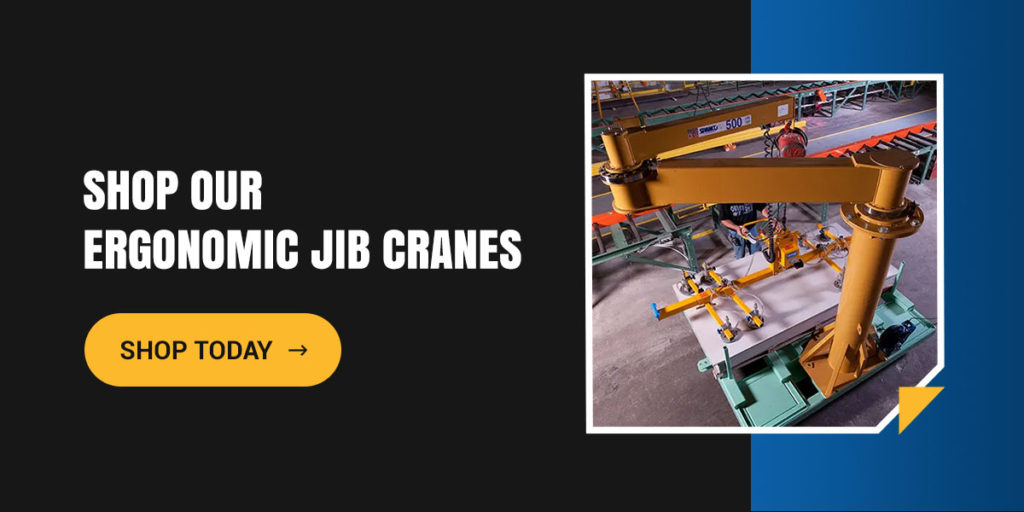How Does Crane Deflection Impact Your Bottom Line?
Jun 4, 2024
How Does Crane Deflection Impact Your Bottom Line?
Crane boom deflection refers to the vertical or horizontal displacement of parts of an overhead crane. Deflections affect the equipment’s performance by reducing its capacity and your employees’ productivity. Measuring your equipment’s deflection will help you understand the overall impact on your bottom line.
How to Measure Deflection
Manufacturers design cranes with different deflection tolerances, represented by an L figure. For example, almost all series of Spanco’s jib cranes have an L/150 deflection — the exceptions are our Wall-Mounted Tie-Rod Supported jib crane (301 Series) with L/600 and the Wall-Mounted Workstation crane (501 Series) with an L/225 deflection. L refers to the length of the crane boom, while 150, 600 and 225 are the allowable deflection rates specified by the manufacturer.
Assuming you have an 8-foot jib crane boom with an L/150 allowable rate, your deflection at 100% capacity would be 0.64 inches, calculated as follows — [8 x 12]/15=0.64. If you had another crane with an L/100 maximum rate, you would have a 0.96-inch deflection, which is 50% more than the 8-foot jib crane.
Note that this formula for calculating deflection does not take into consideration the existing building or mounting structures, which may introduce other issues.
What to Know About Crane Deflection
Cranes do not have a standard allowable rate. For example, the equipment in the above examples may have similar features and designs, yet you cannot tell they have different deflection rates by just looking at them. That’s why it’s important to research and consider deflection when choosing equipment.
Cranes with a higher deflection rate are more complicated to operate because they force operators to push loads uphill, causing premature fatigue. Such equipment has greater potential to result in accidents and losses due to an increased risk of the load rolling over.
Crane Deflection’s Impact on the Bottom Line
Cheap cranes may have a higher deflection rate, forcing you to buy motorized trolleys to push loads uphill. High deflection may affect your financial performance due to decreased employee productivity, higher maintenance requirements, and the opportunity cost of lost time.
You will save on this expense and increase safety and efficiency in the long run by investing in a more reliable crane that is easier to operate, even if it costs more upfront.

Shop Our Ergonomic JIB Cranes
Are you looking for a crane with a high capacity and a low boom deflection? Our engineers fabricate freestanding and foundationless cranes that you can use indoors, and we design equipment with up to 30,000 pounds of load capacity to suit your warehouse needs. Shop our Jib cranes today and explore customized equipment for your facility.
Categories
Share this post
Contact us
Looking for the perfect fall protection equipment? Let us help!